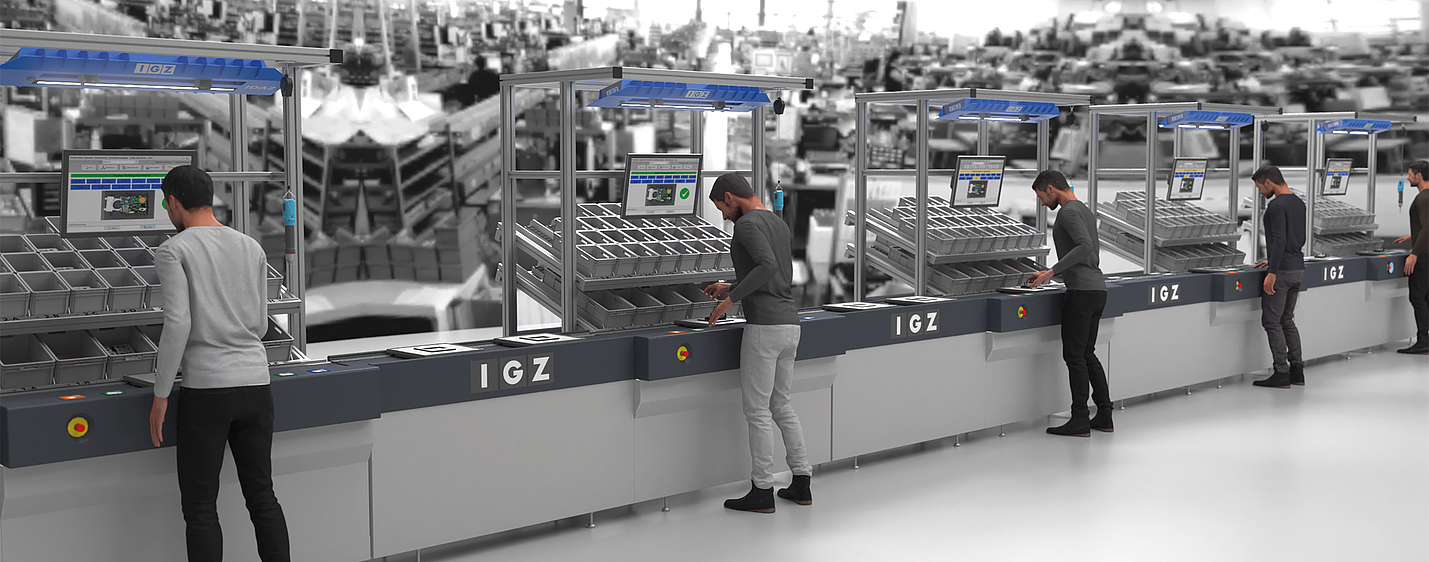Energy Optimization
Energy management and optimization
Sustainable and efficient energy use should be integrated into every company's overall strategy. By actively managing energy use, companies have the opportunity to secure a competitive advantage over their competitors and minimize risks and costs.
Energy Optimization
With Energy Optimization, IGZ guarantees a detailed online analysis of energy use across all forms of energy at the entire company site. Starting from a site overview, the analysis can be refined down to product and process level as well as down to the individual consumer, e.g. a machine.
Correlations between the production process and energy consumption become highly transparent. Weak points in energy use can be quickly identified and specific action scenarios can be reliably derived.
Energy saving potentials become visible, energy flows of the systems and units are constantly monitored and evaluated in detail.
Load peaks and energy flows can easily be allocated to individual systems and machines according to their source. The controlled automatic shutdown of priority B consumers at times of day with increased energy consumption avoids load peaks and leads to considerable cost reductions. Supported by long-term evaluations of key energy figures and trends, meaningful energy reports can be generated, e.g. as a basis for audits or for long-term energy usage planning.
Energy management for cost-efficient production
With Energy Optimization, IGZ provides a solution that reduces costs by deriving potential energy savings. The solution makes it possible to visualize energy consumption comprehensively online and to control it in an energy-optimized manner. It also supports the use of new technologies such as smart grids. The need for efficient energy use is becoming increasingly urgent, particularly due to dwindling resources, rising and fluctuating energy costs, temporary supply disruptions and increasing pressure from legislators.
Possible forms of energy
- Electricity
- Gaseous media (e.g. natural gas, process steam, compressed air, ...)
- Cooling energy
- thermal energy
- Liquid media (e.g. fresh water)
Advantages & benefits
- Precise recording and online transparency of all energy data and cost centers
- Continuous monitoring of metering points
- Identification of uneconomical, energy-intensive consumers
- Load reduction and avoidance of peak loads
- Order and article-related recording of energy values
- Detailed reporting enables long-term analysis for continuous performance monitoring
- Logical summary of physical meters / measuring points (e.g. cost center allocation, evaluation by department, areas, system groups, ...)
- Detailed analysis of energy-critical systems and units
- Alerting of flexible receiver circuits when load is exceeded
- Flexible configuration
- Automatic, load-oriented and coordinated shutdown
- Live monitoring in the cockpit and alarms enable a rapid response

Your contact person
Talk to our experts about your tasks and expectations in production. Benefit from our many years of experience in project planning, implementation and the direct SAP connection of warehouse technology and production systems of any type and from any system provider.
Mr. Andreas Busch | Sales Manager SAP Manufacturing





